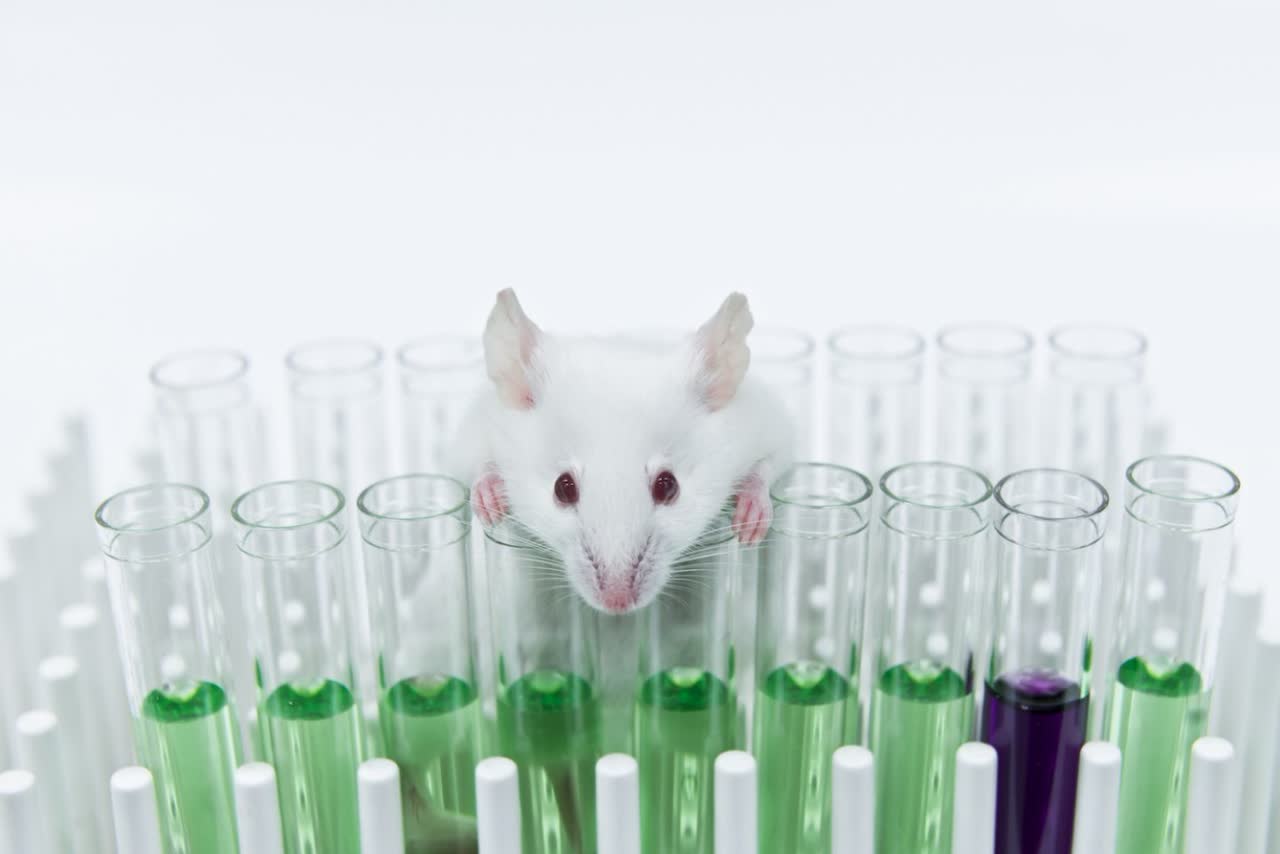| THE CAST OF CHARACTERS |
This is a odd section for a research report, but Chromadex has a fascinating history. The people shown here are for background. People not covered here are not unimportant, but their roles need no special explanation.
Read on. There are no “ Luke, I am your father” moments (yes, a misquote) , but you’ll see a few names more than once.
Dr Charles Brenner
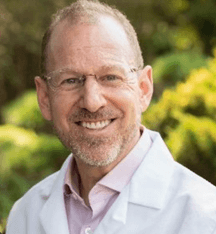
Chief Scientific Advisor, Chromadex.
Alfred E Mann Family Foundation Chair in Diabetes and Cancer Metabolism, City of Hope National Medical Center.
Charles Brenner discovered NR as a vitamin while at Dartmouth, later going into business with Robert Fried (see below) to distribute NR under the Tru Niagen brand in a company called Healthspan Research LLC.
In the great tradition of self experimentation from history makers like Fredrik Banting (insulin), Karl Landsteiner (ABO blood transfusions) and Barry Marshall (helicobacter pylori), Dr Brenner appointed himself Subject Zero for the first human test of NR.
Undoubtedly one of the world’s foremost researchers into NAD and NR, Dr Brenner moved from Iowa University to the City of Hope Hospital in California to become the Alfred E Mann Chair of Cancer and Diabetes in August 2020. The City of Hope combines a clinical research centre, hospital and graduate medical school. This move seems to have reduced his teaching load, allowing more time for research, as well as expanding his research staff, budget and reach dramatically.
There was apparently no “ Chalk Talk” on his hiring, but there was doubtless investigation into his research work and reputation before this very senior appointment was decided by Zoom call. This is additional validation of the strength of Dr Brenner’s body of work and his line of inquiry for the next few years.
Dr Brenner’s City of Hope's website lists the following research priorities, which may indicate his immediate research priorities:
| • NAD metabolomics & systems biology • Coronavirus biology • Postpartum, lactation & neurodevelopment • Diabesity & fatty liver • Genotype-specific cancer targeting |
The most intriguing may be the last item - cancer. Dr Brenner has not published specifically on NR and cancer, but there are at least four preclinical studies that show NR may be useful in cancer and cancer therapies. This preclinical study showed NR slowed breast cancer and this one showed enhanced T-cell activity, a component of new cancer immunotherapies. These studies provide some comfort for those concerned that the metabolism boosting effects of NAD may enhance cancer.
Based on his interviews and twitter page, Dr Brenner seems like a stand-up guy - loves his family, baseball and Iowa and has a personality that is able to maintain objectivity. This is an important assessment as his position raises the possibility for conflict of interest, and being motivated by money rather than science would be a red flag. A second point of reassurance for investors is that a good amount of work on NR and NAD is done outside of the Brenner Lab.
Dr David Sinclair

Professor in the Department of Genetics at Harvard Medical School
“The kind of things we see when we raise NAD levels back up in old mice — there’s a lot of studies way beyond what my lab has done — but some of the things I know of from my lab are increased endurance. So old mice run farther. They have much better blood flow. They have better blood flow in the brain as well, not just their skeletal muscle. They’re resistant to heart attacks. They have less inflammation. Their respiration and their mitochondria get revved up like a young animal would. So there are lots of benefits that we can see in mice.
We have a longevity study that’s in progress that’s looking promising. I can’t say more just yet because people in my lab will kill me”
--- David Sinclair July 2020
With his Aussie heritage and a reputation for being outspoken, Dr Sinclair is the longevity community’s best known name. He is a best-selling author (latest book just translated to Korean, as we all would), has millions of views on YouTube and two appearances on the Joe Rogan show. Dr Sinclair’s bio also includes over a dozen start-ups, including Sirtris, the company behind the resveratrol molecule that was bought for $720m by GSK.
Dr Sinclair is certainly the greatest popularizer of NAD boosters, having written and spoken about taking a gram a day of Nicotinamide Mononucleotide (NMN), another NAD precursor. He has stated he recommends and favours research on NMN because it’s not patented, unlike NR. He recognises NR as an effective NAD booster, citing it as such alongside NMN in this paper.
As examples of Dr Sinclair’s influence, here’s one of several sites which describes his supplement stack, and a video on the same subject with over 100,000 views. He is careful to say this is his personal regimen, and is not offering medical advice. Dr Sinclair is also very influential in countries like China and Japan, where the Harvard brand name is pure platinum. You’d be even richer than Michael Buffer if you could copyright the local language version of “…. according to famed Harvard professor…” in these countries.
As two leading pioneers in NAD research, Dr Brenner and Dr Sinclair know each other personally and professionally. Dr Brenner has described Dr Sinclair as a brilliant scientist, but disagrees with Dr Sinclair on at least three scientific matters. The first is that NAD works primarily through its action on sirtuins, the second is that NMN can be taken whole into the cell (this very recent paper by Dr Sinclair may indicate his position on this has shifted) and the third is that resveratrol has any effect in humans.
They are also quite different people style wise, and if either man was to walk out of the house wearing belt and braces, it would most likely be Dr Brenner. Their relationship may also be complicated by Elysium Health (which is in litigation with Chromadex) which was co-founded by a former mentor of Dr Sinclair, Dr Lenny Guarente of MIT.
Dr Sinclair is also named in a patent purportedly licensed to Elysium, though he has said he will donate all proceeds in the interests of avoiding conflict of interest.
Dr Sinclair’s passion for promoting science has brought detractors as well as fans. The line in scientific circles between exposure and overexposure is thin, and can also shift as opinions and study results change.
People like Dr. Sinclair are important for science though. Not only do they get science out of the lab out into the mainstream, but they also to make the brave steps that lead to breakthroughs. An allegory my son reminded me of is here.
(BTW, if you've ever pulled out a study on the benefits of red wine to justify the next bottle, you can also thank Dr. Sinclair.)
Robert Fried
CEO, Chromadex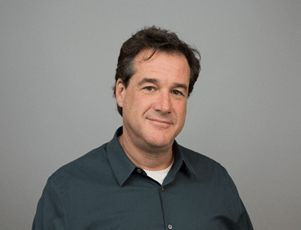
Robert Fried’s was EVP in charge of production at Columbia Pictures where he oversaw movies like Bull Durham, Hoosiers and Robocop. His executive producer credits include Rudy, Collateral and Godzilla. This gives him an interesting background as CEO of Chromadex, and makes him probably the only NASDAQ CEO who has bagged both an Academy Award and an Emmy Award.
Robert Fried and Dr. Brenner co-founded Heathspan Research LLC to distribute NR under the Tru Niagen brand. This business was fully acquired by Chromadex in 2017. Fried has been a director of Chromadex since 2015, and became CEO of Chromadex in 2018, with Frank Jaksch moving from that position to take the role of Executive Chairman.
Fried doesn’t fit the Hollywood stereotype, appearing remarkably down to earth and somewhat old school. A MBA from the Columbia University Graduate School of Business, he apparently rose at a frenetic pace though the ranks at Columbia Pictures due to having pioneered financial analytics within the studio and sporting a reputation for rock solid dependability.
What can be gleaned from Chromadex earnings calls and the occasional interview account for what can be seen about his management style.
There are signs, however, that Robert Fried may have every one of the skills you’d want in a CEO for a company like Chromadex at this time.
Serial entrepreneur
As well as founding Healthspan with Charles Brenner, Fried has founded several companies. One of these, and perhaps emblematic of a strong interest in developing practical uses cases for technology, is Spirit EMX, an internet video content company sold to Hallmark.
Hollywood Producer
Thought not obvious at first glance, Fried’s past as a producer may actually make him perfect for the current job. Producers are about making something big out of nothing, assembling talent, delegating, setting priorities and timelines, assembling and managing talent (and egos), protecting IP, marketing and managing money.
One of his responsibilities as CEO seems to be turning this ingredient and consulting business into a consumer brand. In this, Fried has been effective at developing the Tru Niagen brand and its channel strategy.
He's also a persuasive spokesman for Chromadex and Tru Niagen, being articulate, informed and a true believer. It doesn't hurt that successful movie producers and directors are "1-percenters" in understanding important aspects of human psychology.
Fried's relatively quick pivot to establishing health claims for coronavirus also suggests he keeps a watchful eye, and has a good understanding of the market and the levers that drive sales.
At the risk of this sounding like a hagiography, some of the strategy behind Chromadex has been ingenious. I would go so far as to say that Chromadex may make one great Harvard Business School case study one day (which I would happily write – and proffering my alumni status and classes from this gentleman in support of this pitch).
The identification of Nestle as a partner is inspired, and the deal terms extraordinarily well negotiated. The same can be said of the decision to shrink distributors and resellers in favour of direct distribution. Securing Horizon Ventures as an investor also brought the distribution deal with Watsons (for more see Cast: Li Ka Shing), which is an important part of today's business. Collectively these moves have raised visibility, strengthened IP, and well as boosted sales and margins.
Chromadex's management team is also assembled with forethought. Take for example, Kevin Farr, the CFO who held the same role with Mattel and Mark Friedman, who came over from Herbalife as General Counsel. These men have done global deals of staggering size, and bring skills well beyond that common for a company of Chromadex’s size.
The Scientific Advisory Board is also superbly assembled, reaching beyond platinum bios to assemble a stellar collection of professionals with relevant expertise. For example, Rudy Tanzi, a world expert announced that a clinical trial of Tru Niagen in Alzheimer’s disease at Massachusetts General Hospital a few days ago. He also has consulted for the New England Patriots, a name mentioned in the first page of this report.
Robert Fried also seems to have an excellent relationship with Charles Brenner, a good thing given these are probably the two most important men for the development of the brand and the science of NR in the next few years.
Li Ka Shing
“I will continue to donate the same and more, not out of a sense of my duty but because it is a maxim by which I choose to live my life.”
-- Li Ka Shing

Li Ka Sing, on his 92 birthday.
Hong Kong’s richest man for decade, the man nicknamed “Superman” has a vast empire spanning ports, telecom, retail, property development and infrastructure. Li owns the following businesses involved with Chromadex:
Horizon Ventures: An early stage VC that made a recent killing on Zoom (~$15b profit) is a significant shareholder of Chromadex. Chromadex has 6 Non-Executive Directors out of a total of 8 Board seats, of which two are filled by Li Ka Shing related companies.
Watsons : This health and beauty retailer has over 15,000 stores under 7 brand names. Watsons sells Tru Niagen in HK and Singapore, and in the UK through 200 of their “Superdrug” stores. Watsons also launched “ Tru Niagen Beauty” in HK and Singapore, containing Tru Niagen, hyaluronic acid for skin, biotin for skin, hair, and nails, and Grape Seed Extract and Vitamin E for antioxidants and healthy, beautiful skin.
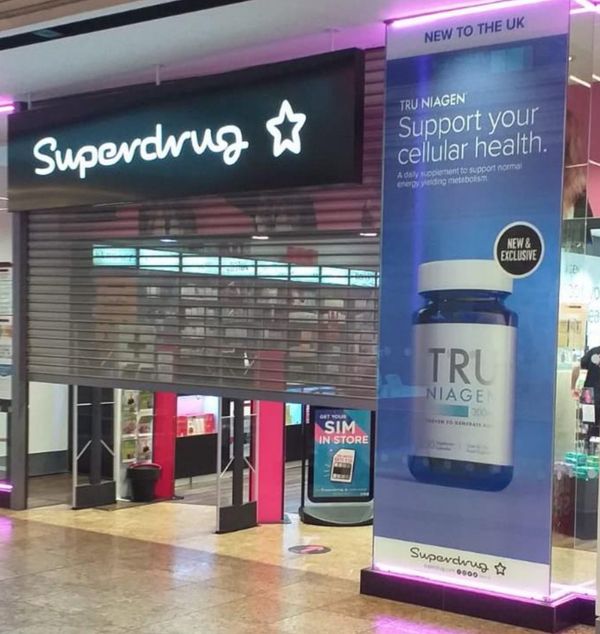
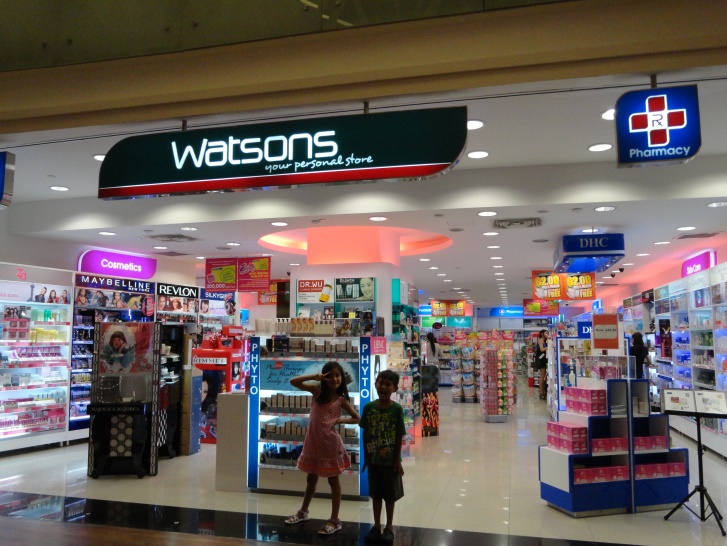

Li Ka Shing is a strong believer and has supplemented with Tru Niagen for the past 3 years, (the Chinese press reports him as “feeling like 20 again” though I’ve not seen a good source for this). While he is in great good shape for a man his age, Li has always been a dynamo, and was positively robust prior to a severe back injury during one of his daily golf games, at age 87.
Horizon Ventures also purchased and donated US$1.6m value of Tru Niagen, which was included as a related party transaction in Q2 2020 revenues. These bottles were donated to health care workers in Hong Kong hospitals as COVID-19 aid.
FAQ
These are my responses to common questions, not official company responses. Take them with an appropriate grain of salt, and as always do your own due diligence.
Why doesn’t Tru Niagen making strong health claims like anti-ageing or curing COVID-19?
This is a great source of discontent amongst retail investors and reflects a misunderstanding of the drug and supplement landscape.
For brevity, only the US (being the largest market for Tru Niagen) is discussed.
The Food and Drug Administration (FDA) is responsible for the regulation of drug, supplements and dietary ingredients in the US, as well as medical devices, conventional foods, tobacco, cosmetics.
Under FDA regulations, no claims about being able to treat, prevent, or cure diseases can be made for supplements.
Any claims about Tru Niagen curing any disease, risks being struck down and Chromadex risks ruining its excellent reputation for responsibility and relationships with regulators. Claim of “support” rather than cure are possible though, but must still be backed by research. Indeed, the FDA sent a “cease and desist” letter to Alive by Nature, a seller of NMN products, to remove COVID-19 from some of its claims.
Under the Lanham Act, competitors can file suit for false claims made by another company that affect their business. Given Chromadex and Elysium both have unresolved Lanham Act litigation claims against each other, it is exceedingly unwise for Chromadex to make claims that it does not have rock solid proof for.
Anti-ageing claims suggest getting younger, which is a pretty hard to prove scientifically and may be next to indefensible in court. It's probably the reason Tru Niagen claims “healthy ageing” rather than “anti-ageing”.
As certified professionals, practising doctors can recommend any product they see fit. Chromadex runs education programs where it shows research on Tru Niagen to doctors, who can make their own conclusions and recommendations. The reach of this is limited though, as doctors see a small number of patients a day.
Can NR be a Drug?
To make drug claims, it’s necessary to become a FDA approved drug by filing a New Drug Application (NDA) for a particular condition or disease.
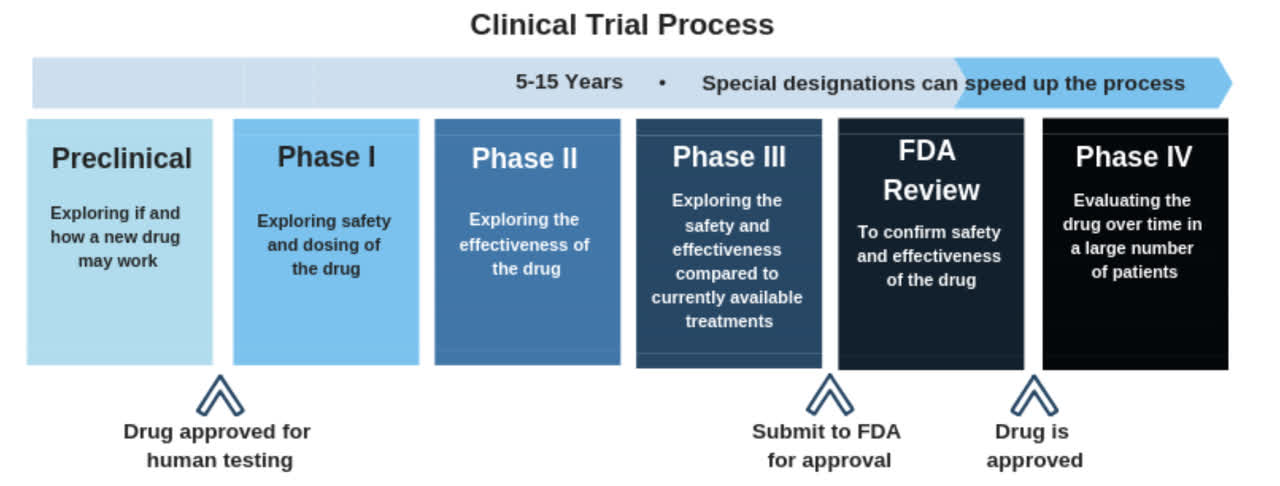
There are 4 phases of trials, and the FDA official recommendation is at least two high power studies to support applications. That said, against its own guidance, a large minority of drugs have been approved with just one trial in recent years.
New Drug Applications are approved based on the safety and efficacy shown in trials, which typically will have at least 300 and may be as large as 3,000 patients or more. The exception is for “ orphan diseases”, where patient populations are so small that large trials are impossible.
There are several reasons we probably won’t see Tru Niagen as a drug in the near future, all of the basic and fundamental at the same time:
THE HURDLES
Too cheap: Tru Niagen’s pricing is way too cheap for a drug, considering that large trials costs tens or hundreds of millions of dollars and listing as a drug brings the ongoing need to satisfy the very stringent FDA requirements (who even sanctioned firms for data integrity process issues). In contrast, the FDA has such a light approach to enforcing supplements regulations, it’s tempting to say it's an unregulated industry.
Perfect Substitute: The widespread availability of Tru Niagen risks any product it contains being undercut with the regular stuff out of the Blue Bottle. Prescription versions of supplements like Vascepa do exist, and in this case sell for ~10x the price of regular supplements. However, Vascepa is highly purified and clinically tested EPA, and clinically tested to have effects that regular fish oil does not have.
Intravenous might be better: While Tru Niagen is highly orally bioavailable, such intake means some of the product is metabolised before reaching the bloodstream. NR can be intravenously injected, and Chromadex's NR patents run till 2026. However, NR Chloride is not suited to intravenous injection. Additionally it's unknown if Nicotinamide, NMN or NAD may be superior as an injection for some tissues.
SOME PATHWAYS
This said, there are several pathways for Chromadex to see its product at closer to drug-like prices:
Second Generation Drug: NRH could be the basis of a next generation NAD boosting drug (see Section: Substitute Products for more on NRH, another Chromadex patented NAD booster), with Tru Niagen kept as a dietary supplement. As well as regular ailments, NRH could be used for orphan diseases like Cockayne Syndrome and diseases with no satisfactory treatment like ALS, Parkinson’s and Alzheimer’s disease.
Formulations: This is combining Tru Niagen as one of several ingredients in a formulation, and charging a premium for it. The premium depends on consumers being willing to pay more for the convenience of this formulation, or this particular formulation because of the brand or the results of clinical trials. For example, Tru Niagen is one of 4 supplements in a cocktail used for COVID-19 ( See: Section: COVID-19 trial), and the only proprietary ingredient -- meaning it's the key ingredient that prevents knock-offs.
In such cases, Chromadex could ask for a share of gross. For example, a 15% share of a $50/dose product would work out to $7.50/dose profit, multiplying the $1 it would make by selling the same amount of Tru Niagen at regular retail prices.
Extended release and other differentiated variations are also a possibility.
Health as a Service: Aimmune, the maker of a peanut allergy treatment which was acquired months ago by Nestle for $3b, has a business model worth looking at. Rather than charging for a drug, it charges ~$8k for an “all-in” supervised treatment. Chromadex could offer such packages to doctors, with lab tests and personalised treatment monitoring to increase the value to patients.
From a valuation perspective solving the pricing problem – charging patients on value-based pricing (rather than “cost plus”) will be huge for shareholders. A company with a drug for just one disease has an average valuation of over USB3 billion, which is over 10x Chromadex’s current valuation.
Conditions vs drugs
Non-disease conditions are an avenue to provide treatments outside of FDA drug regulations. An example under active research is the role of NR in infant nutrition and nursing mothers. The preclinical research in mice was funded by the Gates Foundation.
The results of this study were remarkable. NAD was depleted in the nursing mothers (lactation being a source of stress) and NR supplementation improved milk production, even leading to better learning outcomes, stress resistance and sense of balance for their offspring.
Should anywhere close to these results be proven in clinical studies, you can bet a Tru Niagen based infant formula will be on the shelves, very likely in a tin with a tasteful “Nestle ™” logo on the side.
Is Tru Niagen anti-ageing?
Many customers buy NR and NMN for anti-ageing properties. A good deal of this interest can be attributed to David Sinclair, who advocates boosting NAD to activatee sirtuins, proteins thought to protect the epigenome and important to ageing. In yeast and mice, NAD boosting yields great longevity benefits.
Investors should probably not look at Chromadex for any future health claims on lengthening lifespan. Investors would be better off focusing on research supported, provable benefits. As for ageing, the most objective endpoint – age at death -- makes for unfeasible long trials.
Ageing markers such as the Horvath clock are a possibility, but these have not yet been validated and it would take a lot of time to conduct trials to show this correlates to age in practice. A simpler measure to test might be Heart Rate Variability, which is highly correlated with biological age. Restoring HRV to the levels of youth has not yet been achieved through any means and would be a big deal.
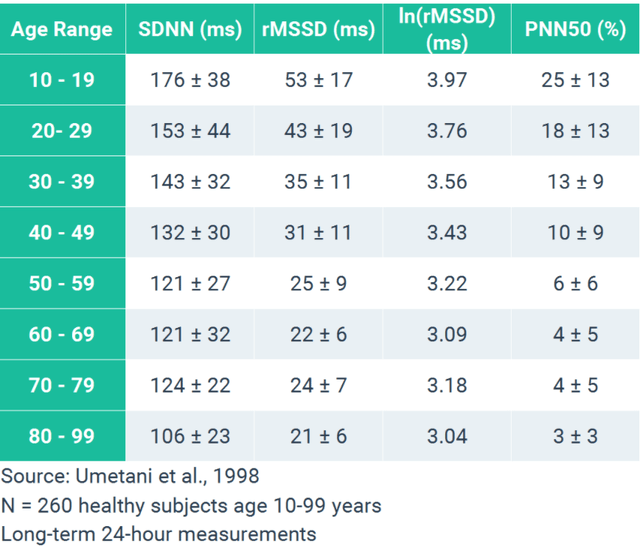
On the limits of lifespan, we probably won’t see anywhere near the longevity boosts seen in mice and yeast in humans with such methods as NR.
Humans are already quite long lived and human genes today are probably somewhat selected for longevity already. In the context of a community, there is an evolutionary survival advantage to having parents and grandparents around. For species such as mice and bacteria, growth and rapid reproduction are better ways to ensure species continuity, which may explain why 30-40% increases in their lifespan can be attained quite easily.
Of course, if NR is prophylactic or curative of some diseases and ailments, it will naturally extend both health span and lifespan.
It may also help us stay well long enough for cellular reprogramming or some other effective protocol to emerge.
Is Tru Niagen just working through a placebo effect?
It's possible but not that likely given the combination of promising science and hundreds of thousands of convinced users, a decent number of which attribute highly improbable claims to NR.
Additionally, the age group that many NR users belong to (60+) are likely a lot more cynical than perky youths, and many of them have tried a lot of supplements. The supplement stacks used by NR users seem to be typically sensible (e.g. Vitamin D, zinc, omegas) and they don't rave about the other supplements they use, nor are apt to rave about homeopathy, essential oils or healing crystals.
Can young people take Tru Niagen?
This is a question best left for researchers and medical practitioners. Lacking either credential, I’ll refer to Dr Brenner who has said that while younger people have higher baseline NAD, they are not immune to being depleted under conditions of extreme stress, which may be anything from diseases, severe sleep deprivation, intense or extended exercise and so on.
In other words, saying older people need more NAD more often is not the same as saying younger people will never need more.
N= 2: A look at the longest users of NAD boosters
There’s an undeniable weirdness about studying the appearances of two doctors in a research report. However, both Dr Brenner and Dr Sinclair invited comments by separately publishing two differently dated driver’s licenses on their Twitter pages. It's a question that some inquiring minds will want to know, making it the very definition of a FAQ.
Both doctors are well aware of, and live healthy lifestyles that include exercise and good diets. Even aside from the evidence from photographs being ridiculously anecdotal, it must be remembered that any results cannot be attributed to NAD boosting alone.
This said, Brenner and Sinclair are pioneers in the science of NAD and represent some of the longest users of NAD boosters around. They also use a lot more than the equivalent bottle recommendation of 300mg of Tru Niagen.
Dr Brenner has not revealed his dosing publicly, but it’s known that other members of Chromadex management take higher doses than the bottle recommendations of 300mg.
CEO Fried said recently he’s over 1g as a strategy against COVID-19. This is probably not an extreme dose as safety studies have been conducted to 2000mg and the 2016 GRAS application noted the UK Expert Groups set a Tolerable Upper Intake Level ( UL), at 3g for 3 years. UL is defined as the highest daily level with no adverse effects in most humans
Dr Sinclair’s personal dosing of 1g of NMN is equivalent to 800mg of Tru Niagen on a molar basis.
Below are photos of Dr Brenner taken 8 years apart, and the photo on the left is apparently Day 1 of NR usage. He undeniably looks a little older in the photo on the right, but looks great at almost age 59. From his interviews, he is also very sharp. His driver license photo on Twitter is here.
Dead hair follicles don’t regenerate by themselves, and isn’t subject to a placebo effect. Perhaps the most interesting thing is that Dr Brenner’s hairline does not seem to have receded a bit between the two photos.
Charles Brenner, world’s longest Tru Niagen user (7+ years)
Age 52 Age 59
David Sinclair, possibly world’s longest user of NMN (4 years)
It's unclear when Dr Sinclair started using NMN, but he’s an experimental guy and probably supplemented NMN early. The first studies on NMN are 2015/2016, so 4 years is a reasonable guess. He has also used resveratrol for over a decade.
Age 40 Age 50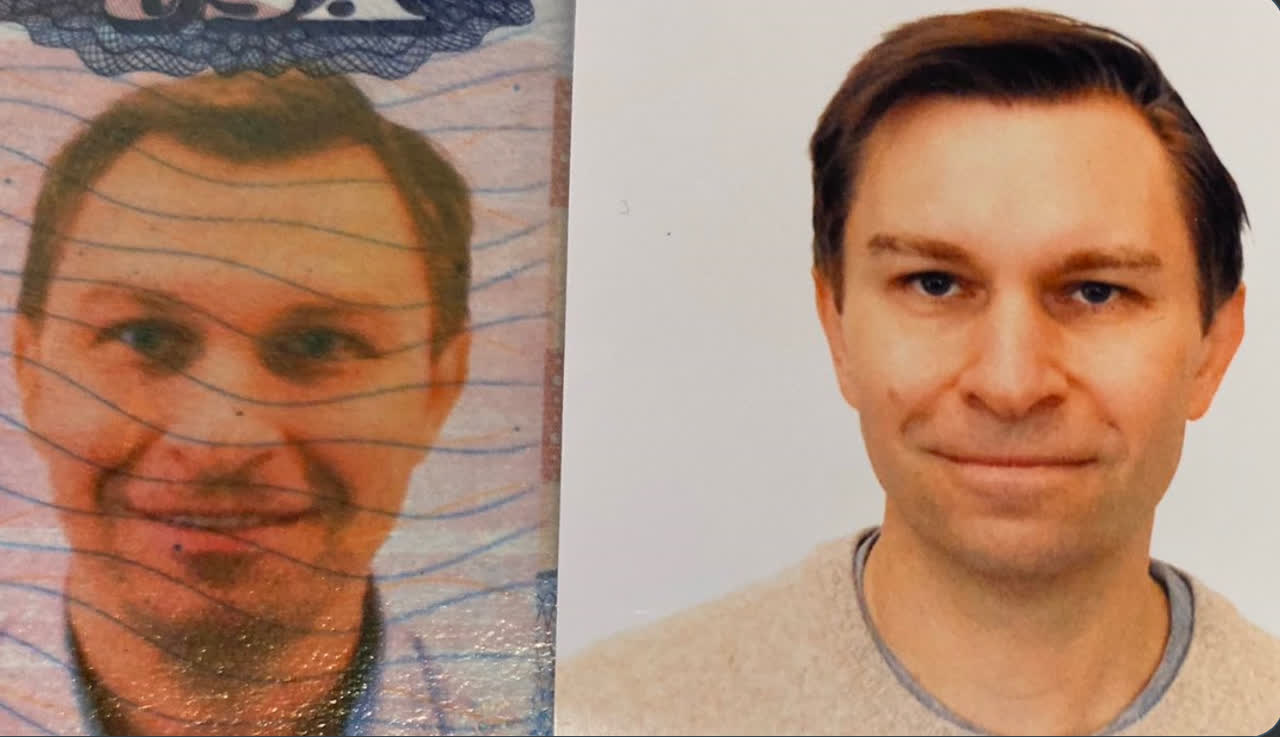
Source: Twitter
In the last 10 years, Dr Sinclair seems to have aged at the rate of Bilbo Baggins in LOTR, Book Two. The photos do span a period of life when that’s vaguely possible with good genes and diligent attention though.
The most noteworthy snippet may be that he does not have a trace of grey hair at age 50. He apparently does not use hair dye, and there are also photos that show him with an impressive and silver-free beard game.
Why is the research so slow?
Medical research crawls when compared to advances in the digital domain. This is because organisms are mindbogglingly complex systems we don’t have the design and documentation for. Indeed, mammalian systems seem to have a lot of workarounds that are barely understood or not understood at all.
Research is also complex and highly structured. Time is consumed in writing grant papers, design studies and experiments, recruit researchers and collaborators, clear ethics boards, receive supplies, recruit, screen and register patients, conduct the trial itself, evaluate results, replicate or run additional tests as required, write and submit paper for peer review and publication, address reviewer concerns including doing additional tests, calculations or rewriting the paper as required. Occasionally, good science gets rejected such as the work of Kary Mullis on PCR, foundational to the tests used so widely in our COVID-19 times.
There’s also an element of purposeful deliberation about research work. A "moon shot" that chews up resources, demotivates lab staff and jeopardises future funding and perhaps the line of enquiry itself is a bad idea. It is far better to understand mechanisms and design trials that produce successful results than making leaps that are too far.
During all this, the researchers are very likely working on other trials, teaching and doing various aspects of the above process for new trials.
COVID-19 has created a trend of publishing studies initially as non-reviewed pre-prints, which can speed the process many months. However, COVID-19 related logistics delays, social distancing guidelines and a spike in demand for reviewers for COVID-19 papers has apparently have clawed back some of the time savings for many researchers .
In relation to COVID-19 trials, there seem to be two large logistical problems. Firstly, many doctors aren’t all that keen to have infected patients in the office, and secondly there is competition for COVID-19 infected volunteers to run trials (a problem that may disappear this winter). Understandably, many would rather be in a sexy antibody trial than a vitamin trial, and most trials won’t allow multiple enrolments so results can be related to treatment.
In relation to NAD and NR, this is a smallish community of busy scientists. Conflicts of interest and hectic workloads don’t make for speedy publications.
Isn’t NR just Expensive B3?
Below is a table showing differences. Dr Brenner has also tweeted that studies show NR is more effective in situations like the failing heart.
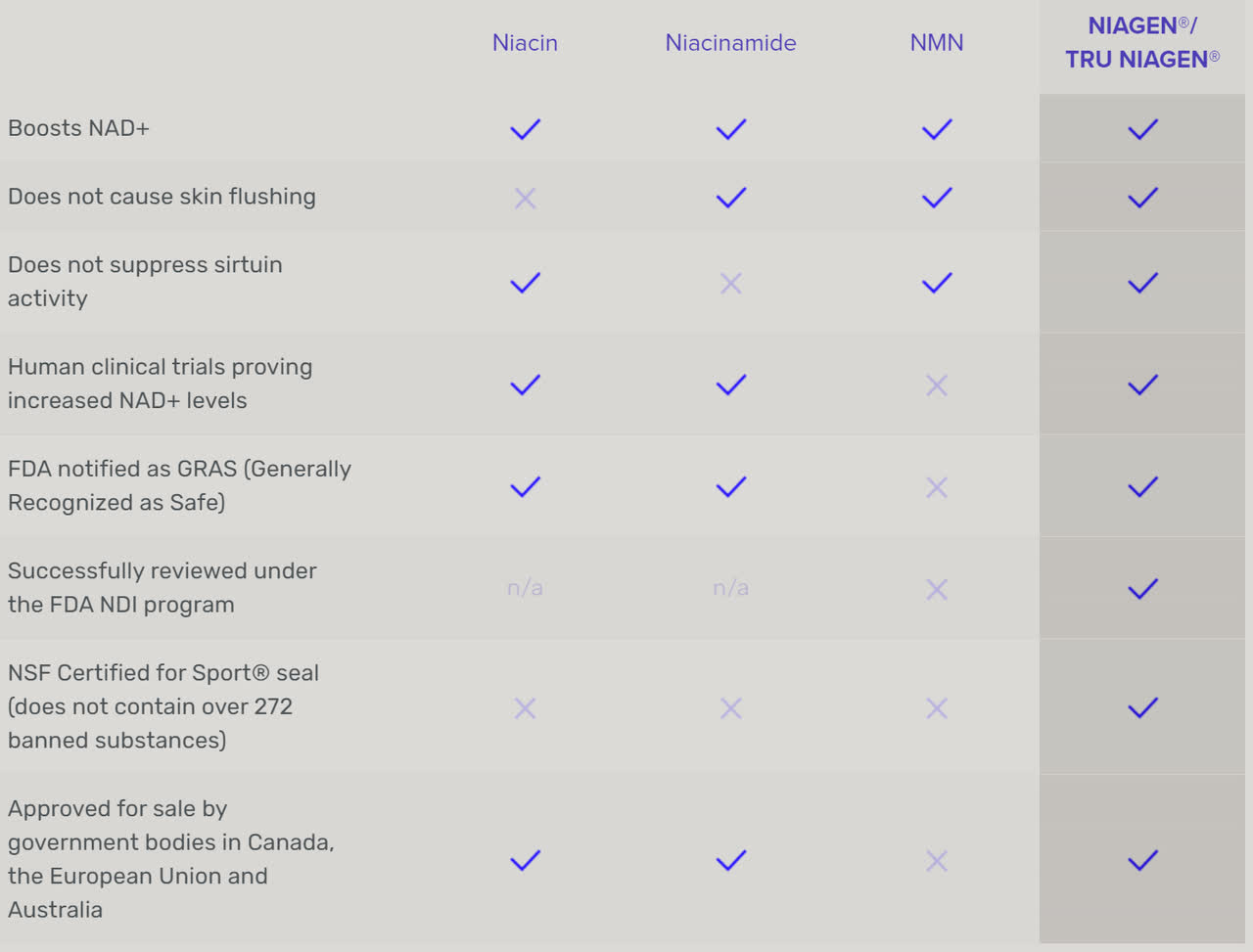
Sources: Chromadex
Also see Section: Battle of the B3s discussion earlier.
Tru Niagen does nothing!
AMAZON’S 3 MOST RECENT 1-STAR REVIEWS
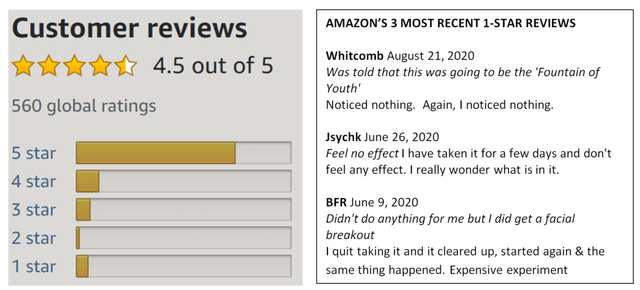
Not everyone who tries NR is impressed by it. There are a number of plausible reasons for this:
Expectations are too high: It’s an expensive product, and that makes many people expect a lot. NR is not something that kicks like a double espresso though. It also may take a few weeks to build resting NAD levels.
It's prophylaxis, not rocket fuel: Unless you are ill, boosting NAD offers a protective rather than supercharging effect. An analogy may be wearing sunscreen on the beach – you’ll surely feel better than being sunburned, but you’d never think – “ I feel great!” after slapping on some Coppertone.
Removes the bottlenecks: Most of the effects of NR boosting are based on its NAD mediated effects. Its effects as co-enzyme should be expected to be less obvious than other molecules that bind to receptors like adrenaline and caffeine. For example, caffeine binds to adenosine receptors, a molecule that causes drowsiness by slowing down nerve cell activity.
Give it time: NR may work best – or perhaps the effects are most easily felt – if you are doing the rest right (sleep, exercise and diet) and doing it consistently. It can also take several weeks to raise the resting NAD baseline.
What’s your view of Tru Niagen’s effectiveness?
I'm not a MD, so will quote this review from an independent website, and note that many people report “feeling” effects at a higher than label dose – 600mg or more, but not at 300mg.
“If you are able to pay a dollar per day for the Tru Niagen supplement and are comfortable with the fact that scientists are still working to prove the positive health benefits, then we recommend you try it...If you purchase the product, we suggest taking it for at least two months before drawing conclusions; our testers reported feeling more energetic after several weeks of taking the supplement each day”
If NAD is so good, why not just take NAD?
NAD as a molecule is too big to enter cells, and NR is actually better at increasing intracellular NAD than taking NAD itself.
Which diseases are the most promising for NR?
Dr Brenner published this on his website:
“We are currently prioritizing partnerships with academic researchers looking to use nicotinamide riboside to advance knowledge in one or more of the following research areas listed below. Please refer to the references for more information.
Nutritional supplementation of NR as a strategy for promoting human health Effects of NR supplementation on maintaining intrinsic capacity for healthy human ageing Demonstrating the mechanistic relationship between NR and the nine hallmarks of ageing, with particular focus on mitochondrial health
Another reasonable a priori speculation is to note that the symptoms of Pellagra, a disease of vitamin B deficiency are diarrhoea, dermatitis and dementia. These are diseases of high energy and high turnover cells, namely stomach, liver, skin and brain. Other energy energy-expensive cells are stem cells and immune cells.
Take for example the brain, by far the most metabolically active organ in the body (2% of body weight but 20% energy expenditure). While exact mechanisms are not fully understood, it is known that B vitamins are actively transported across the blood brain barrier.
There are no useful treatments for a number of devastating disorders like Alzheimer, Parkinson’s Disease and a number of orphan diseases. Even if NR has small effects, this would still be tremendous news indeed. NR has shown promise in preclinical trials and is under active investigation in clinical trials.
Why does NAD decline with age?
This is not entirely known, but the current consensus seems to be that is that it is probably due to inflammation and DNA repair driven increase in NAD consumption with age, and possibly less effective production of NAD. For example, production of NAD through the Nicotinamide phosphoribosyltransferase (NAMPT) pathway used by Nicotinamide seems to decline with age.
Why is this report so long?
The answer is: It's as short as I could make it without skipping over too many things. Chromadex developed Tru Niagen well after its IPO and while some good analysts give occasional updates, it has never has “Initiation level” coverage of its stock.
This is actually part of the reason for this primer. It has taken far taken more time than coverage on a stock 10-100x the size, and analysts can't justify this amount of time on someone else's dime.
Chromadex has a number of things about it that make it a uniquely interesting company. It has a product that can provide immense benefits to untold numbers of people, a management team and a mission worthy of respect and is also largely misunderstood by the market.
I’m curious to see where the road it walks lead, and proffer this report in the hope it can help accelerate and perhaps smooth the next few steps. Even if the science bums out, doing it quickly so we can move on to the next thing will be providing something useful.
Why should we pay at least some attention to mouse studies.
“If you have cancer and you are a mouse, we can take good care of you.”
-- Judah Folkman cancer researcher
Like all studies on compounds, the early research on NR has been preclinical studies using cell cultures and in animals. Such studies have advantages in terms of speed, cost, and controllability, as well as allowing safety and toxicity data to be gathered without harm to human health.
It's fairly common for compounds to show great preclinical results but fail to deliver in controlled human trials. Indeed, the statistics are appalling with 95% of drugs tested in patients failing to reach the market, despite promising animal studies.
Time will tell where the science lands, but the most common reasons for the 95% failures should not apply to NR. Specifically, these are:
Differences in absorption and metabolism:
Why NR is different: We know it is orally bio-available and does what we want in humans – boosting NAD.
The absorption and metabolism of compound between human and animals varies wildly, due to huge differences in lifestyle and diets dating back millions of generations.
Resveratrol, which is so beneficial to mice that they should buy it by the truckload, doesn’t do much in people as the oral bio-availability is almost zero, and what little is absorbed is metabolised very quickly. Without digging too deeply, it may not be all that surprising that a creature that eats tree bark and its own poop might get more out of this sawdust-like compound than humans.
Poor disease models
Why NR could be different: We know NAD is used in hundreds of processes in our bodies.
Illnesses like autism, high blood pressure, Alzheimer’s are typically simulated using single gene mouse models and while Alzheimer’s is studied in mice, it is not a disease of mice.
For example, the mouse brain is 70 percent neurons and 30 percent glia, while the human brain has approximately opposite ratios. Glia is considered the “glue” or structural support of the brain. Mice also live around two years, while people can live for 80 years or more. Protein accumulation deposited over 80 years through an aged cardiovascular systems is quite probably not the same as that deposited in one or two years.
One more example – cancer. It’s an old joke that we can cure cancer in mice, but as well as not being all that funny, it’s also not that true.
We can only cure mice of the cancers they get after suppressing their immune systems. This clearly makes the cancer environment markedly different from most cancer in humans.
The use of NAD is so ubiquitous in organisms and the synthesis pathways for NAD are so highly conserved across time and species (see earlier) that a plausible assumption is that changes affect species survival and prevent gene changes from being passed on to future generations. This is completely speculative on my part, but plausible.
Even if this hypothesis doesn’t hold, we probably shouldn’t expect such a high failure rate as for cancer and Alzheimer’s, where the models are clearly poor. Indeed, a decent percentage of the clinical studies show promise that NR will have good effects on people.
Safety
Why NR could be different: Somewhere around 40-50% of drugs fail due to safety issues and side effects. The many reasons NR is regarded to be safe has been discussed in detail already.
Inflammation
Given the very different diets and lifestyles over millions of years, inflammatory responses could be expected - and do differ - between mice and people. However we know from clinical trials that NR has anti-inflammatory effects in at least some situations.
Why isn’t Chromadex in China?
Though available through cross-border routes such as Trunigaen.cn, Tmall, JD.com and Kaola, NR is not sold through retail stores in China.
China requires supplements to be approved for sale (“ blue hat” approval), and has a limited range of allowed health claims for supplements, none of which are all that authentic or captivating – see the table below. Items in bold are claims that Chromadex may be interested in.
China’s Approved Health Claims
|
1 |
2 |
3 |
4 |
|
Enhancing immune |
Assisting blood lipids reduction |
Assisting blood sugar reduction |
Anti-oxidative |
|
5 |
6 |
7 |
8 |
|
Assisting memory improvement |
Alleviating eye fatigue |
Alleviating lead excretion |
Clear the throat |
|
9 |
10 |
11 |
12 |
|
Assisting blood pressure reduction |
Sleep Improvement |
Facilitating milk secretion |
Alleviating physical fatigue |
|
13 |
14 |
15 |
16 |
|
Enhancing anoxia endurance |
Assisting irradiation hazard protection |
Weight loss |
Improving child growth |
|
17 |
18 |
19 |
20 |
|
Increasing bone density |
Improving nutritional anaemia |
Assisting the protection against chemical injury of liver |
Eliminating acne |
|
21 |
22 |
23 |
24 |
|
Eliminating skin chloasma |
Improving skin water content |
Improving skin oil content |
Regulating gastrointestinal tract flora |
|
25 |
26 |
27 |
|
|
Facilitating digestion |
Facilitating feces excretion |
Assisting the protection of gastric mucosa |
WHAT ARE THE COUNTRY APPROVED HEALTH CLAIMS
Country: US

Regulator: FDA
Standard of claim: Competent and reliable scientific evidence, notification to FDA
Claims:
NAD+ Depletion = Diminished Cellular Health
NAD+ is a vital coenzyme, naturally produced in the body that promotes cellular defence, resilience and repair.
As you age, NAD+ declines. Stressors such as intense exercise, immune stress, and sleep disruption also contribute to NAD+ depletion.
Cellular Energy: “Fuels your body’s energy engines—your mitochondria.”
Cellular Defence: “Helps cells defend against metabolic stresses, such as overeating.”
Cellular Repair: “Promotes repair at the cellular level, counteracting the effects of stress and time on your body.”
Cellular Vitality: “Helps cells run more efficiently as you age, promoting youthful cellular function.”
Country: UK

Regulator: European Commission
Standard of Claim: Proof of cause and effect. Claims are scientifically assessed by the EFSA and, if given a favourable opinion, is then authorised for use by the Commission.
Claims:
NAD is a vital cellular resource which helps fuel many of the body’s essential functions Tru Niagen contributes to:
The reduction of tiredness and fatigue
Normal energy-yielding metabolism
The maintenance of normal skin
Normal functioning of the nervous system
Normal psychological function
Normal mucous membranes
Country: Canada
Regulator: Health Canada

Standard of Claim: Health claim required to be supported by evidence, the level of which depends on the claim and risk associated with the claim (e.g. “reduces arterial plaque” would need much more evidence than “may assist digestion”). Claims must be authorised by Health Canada.
Claims:
Support Energy Metabolism
Support Biological Functions
Helps Encourage Cellular Health
Country: Australia
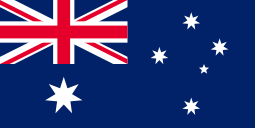
Regulator: Therapeutic Goods Administration ( TGA)
Standard of Claims: Indications and claims are required to be supported by evidence, the level of which depends on the claim and risk associated with the claim. Claims generally used for listed complementary medicines (broadly non-drug supplements) are preauthorised by the TGA.
Claims:
Supports Cellular Repair
Maintains Healthy Mitochondria
Supports Cellular Energy
Maintain/support general health and well being
Maintain/support body tissue repair/regeneration
Country: Singapore

Regulator: Health Sciences Authority ( HSA)
Standard of Claims: All claims should be substantiated by good quality evidence that is relevant to the claims.
Clinically demonstrated to boost NAD+ and energy metabolism, Tru Niagen works to:
Promote healthy ageing
Revitalise from within
Increase energy
Hong Kong

Regulation: Trade Descriptions Ordinance (Cap. 362)
Prohibits false trade descriptions, false, misleading or incomplete information, false marks and misstatements in respect of goods and services. Therefore, any claims on the health benefits of foods must be capable of being substantiated
Cellular rejuvenation
Stimulates brain cell activities
Improves memory and concentration
Healthy-ageing
May assist in stabilizing blood sugar and lipids
Revitalizing
Proven safe and effective product to replenish NAD+
Fuels the body’s energy “engines” (mitochondria)
A DEEP DIVE INTO THE CLINICAL TRIALS
There’s a common misunderstanding that probability tells us how much attention to pay to research results – that is a low p-value tells us whether something is meaningful, and the lower the p-value the more meaningful the data is.
This is subtly incorrect.
P-value tells us the probability a given result is by chance, and very low p-values tell us the results are very unlikely due to chance. However, p-values are strongly and negatively correlated with sample size.
Take the example a coin toss, where a special coin with “heads” on both sides is used. On the first toss, we won’t suspect this coin could only throw heads, because the chance of throwing heads is 50%. Our loaded coin would say there's a p=0.5 chance of heads, which is conventionaly interpreted as the result not being significant.
Indeed it would take 5 heads in a row before we finally meet the <5% test set of significance in most tests, and considered the coin as unusual.
This would obviously be a problem if we had only tossed the coin 4 times. Examining the clinical trials shows the possibility that the trials may have been under-powered, rather than there was no effect from NR.
This is the equivalent of making only 4 coin tosses when to get the results we want to see, 5 tosses are needed. .
Clinical trials: Selected results
|
Publication (Click to link) |
Dose |
Length |
Probability effect happened by chance |
Notable results |
|
1. Nicotinamide riboside supplementation alters body composition |
1g/day |
6 weeks |
2% 2% 4% 2 % |
Decreased fat mass, particularly in women (37.35% ± 2.49% compared with 38.68% ± 2.58% in NR and placebo) Increased lean mass (62.65% ± 2.49% compared with 61.32% ± 2.58% in NR and placebo) Increased muscle acetyl carnitine, (4558 ± 749 vs. 3025 ± 316 pmol/mg dry weight in NR and placebo. See here for why some people think this a good thing Increased sleeping metabolic rate |
|
2. Chronic nicotinamide riboside supplementation is well-tolerated |
1g/day |
2 x 6 weeks crossover study |
5% 3% |
Systolic blood pressure ( SBP) was 9 mmHg lower after NR vs. placebo in individuals with stage I hypertension. No change was observed in subjects with initial SBP in the normal range Reduction in aortic stiffness using the gold standard PVV measure |
|
3. A randomized placebo-controlled clinical trial of nicotinamide riboside |
2g/day |
12 weeks |
13% |
18% reduction in liver fat (i.e. hepatic liver content) |
|
4. Combined metabolic cofactor supplementation accelerates recovery in mild-to-moderate COVID-19 |
2g/day |
14 days |
0.01% |
2 grams of NR, along with NAC, L-serine, and L-carnitine tartrate to the standard of care reduce COVID-19 recovery times by 30% as compared to the placebo group. At day eight, 67% of the treated group has no symptoms compared to just 27% of the untreated group. |
A reading of the third study shows even at the outset, it risked being under powered, having its stated outcome as showing NR to have effects for insulin sensitivity in overweight subjects in the order of losing 7% of body weight (16 pounds) or taking metformin, a prescription drug taken in gram doses.
Given this, it’s hardly surprising that the sample may have been too small to reach statistical significance for the fairly tricky task of losing liver fat (many try and fail).
In real life, effect sizes are not binary like coin tosses, and sample sizes need to be much larger than the equivalent of 5 tosses to compensate for this (e.g. if a dice was loaded to roll a "1", 5% more often, we'd need dozens of rolls to pick this up. COVID-19 vaccine trials are being run with 30,000 volunteers and more for many reasons, including this one.
Beyond p-value: Looking at Effect Sizes
When sample sizes are small, we can also look at effect size, that is the magnitude of the change. Using a common statistical tool for effect size, Cohen’s D, categories the size of observed changes as “large” in the above studies.
Cohen compared an effect size of 0.8 as in the order of the difference in height differences between 13 and 18-year old girls. In simplistic terms, the chances of these results being insignificant is comparable to mistaking a table of 18-year old girls for 13-year olds.
A deeper peek into the result’s significance
A quote from the third paper as to why the blood pressure results might be huge (edited lightly for brevity):
a. Systolic Blood Pressure ( SBP) of 120−139 mmHg is observed in ~50% of all middle-aged and older adults in the US
b. SBP < 140 mmHg is responsible for at least one-third of all BP-attributable deaths and associated with increased risk of heart disease, stroke, cognitive impairment/dementia and chronic kidney disease, among other disorders of aging
c. For individuals with SBP of 120–139 mmHg, lifestyle modifications such as diet and exercise are recommended before medications. Given the low adherence to healthy lifestyle practices in middle-aged and older adults, a natural, CR-mimicking, dietary supplement like NR with potential BP-lowering effects might represent a complementary approach for preserving cardiovascular health with ageing.(Emphasis added)
In other words, a very large number of people could be helped by the 9mmHg reduction in blood pressure.
Another View of the Studies
Each of the three studies showed implausible results (weight loss without work / liver fat reduction / improved blood pressure), with the statistical results also shown to be quite unlikely due to chance. 95% is an arbitrary threshold, and as equity investors pretty much every one of our decisions are based on far less than this level of certainty.
In other words, there is a good chance that follow-up studies with larger populations will show effects that could turn Tru Niagen to be effective for the above ailments.
Additionally, the length of human trials is very short compared to mice studies. Mice have metabolic rates ~10x higher than humans, and five weeks to a mouse is equivalent of to around three years to a human. While we are not suggesting three year NR trials are needed, even relatively effective treatments like exercise and diet need some time to yield significant changes. A reasonably more suitable time frame to test the effects may be 4-6 months.
The first study did reach conventional significance, but appears to have used a Bonferroni correction which set a more stringent p-value equating to 0.6% chance (~1/167). This is equivalent to needing to see eight heads in a row before being comfortable that something odd is happening.
The non-replication of the insulin response seen in animal studies is disappointing, but with a different study design, different population characteristics and endpoints, perhaps strongly significant results may have been obtained. Chromadex’s Chief Scientific Advisor, Charles Brenner, suggested in this paper a longer trial combined with other lifestyle changes such as exercise.
This is the nature of science itself – the first steps are exploratory, and as understanding of mechanisms, how to take measurements and effect sizes improve, it becomes far easier to design trials that reach endpoints successfully.
PAYING ATTENTION TO MECHANISM OF ACTION
Science is full of examples where correlation is not the same as causation. For example, COVID-19 mortality is correlated to deep forehead wrinkles and beach drownings to ice cream sales. These correlations are, of course, absurd. In the first case the real relationship is between COVID-19 death and age and in the second, both drownings and ice cream sales are correlated to visits to the beach. (Meaning that moisturising won’t help for the former and shutting down Ben and Jerry’s won’t help with the latter.)
Understanding the mechanism of action is key to avoiding spurious correlations. For example, if our car didn’t start and our gas tank was empty, a reasonable conclusion is this is the reason the car didn’t start.
While the exact mechanisms of action can't be conclusively identified, it is certainly plausible that extra NAD allows our bodies to make and repair molecules to restore health. This is supported by research that indicates that in times of trouble, the body likes having more NAD on hand.
In separate studies on heart failure and coronavirus infection, NRK, a gene associated with the conversion of NR to NAD became significantly upregulated. This suggests the body is searching for extra NAD to fuel its repair mechanisms. Allaying fears that the NAD might be hijacked by the virus, viral replication was not increased with NR supplementation.
There are over 400 processes that require NAD. If the body is the Rube Goldberg cascade of processes it appears to be, a molecule that keeps these 400+ processes going and bottleneck-free plausibly has value.
The question for an investor can be framed as follows: how many heads will you wait to see before investing?
Disclosure: I am/we are long CDXC.


